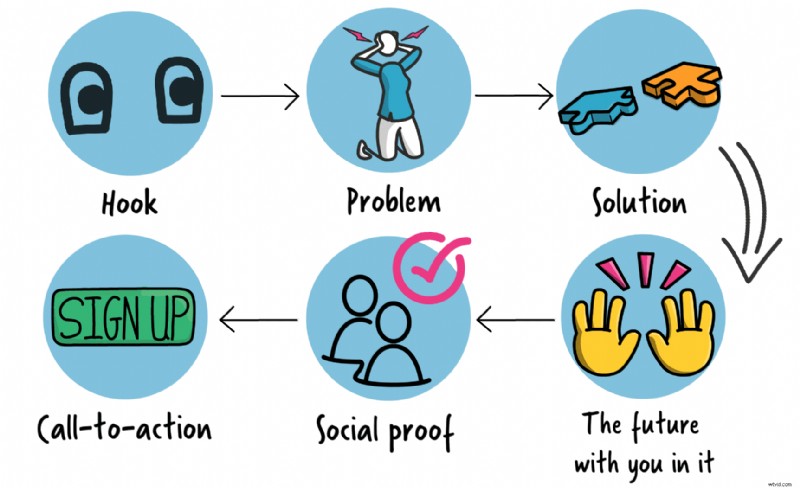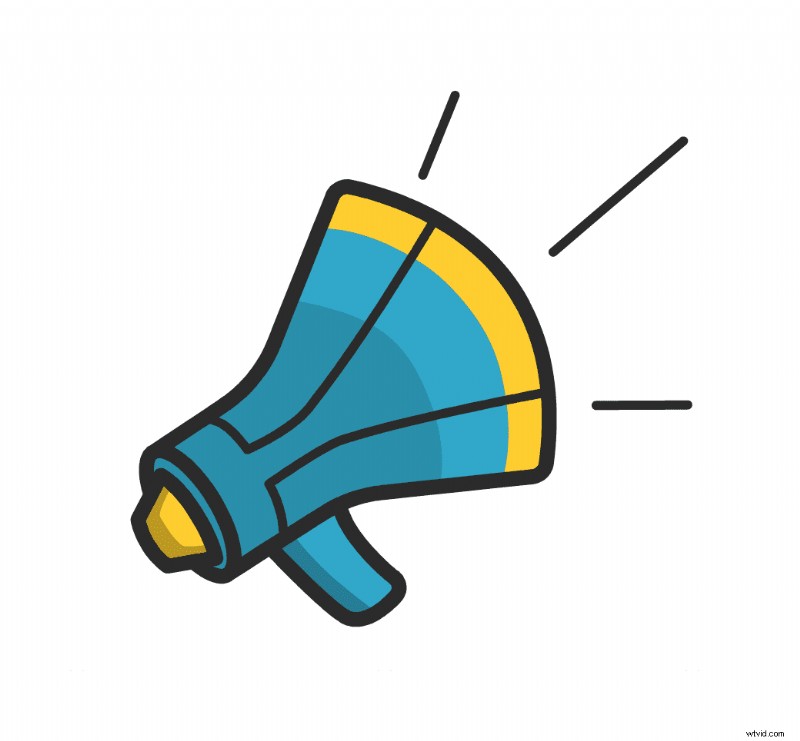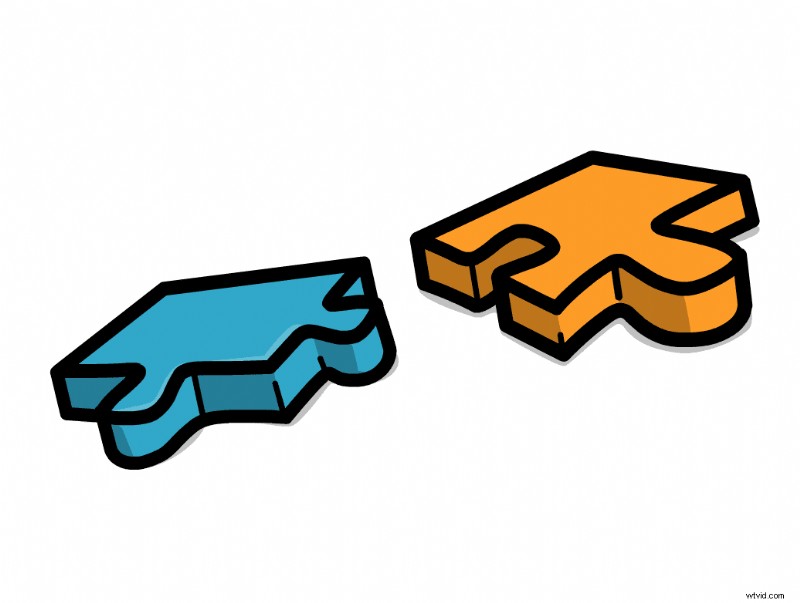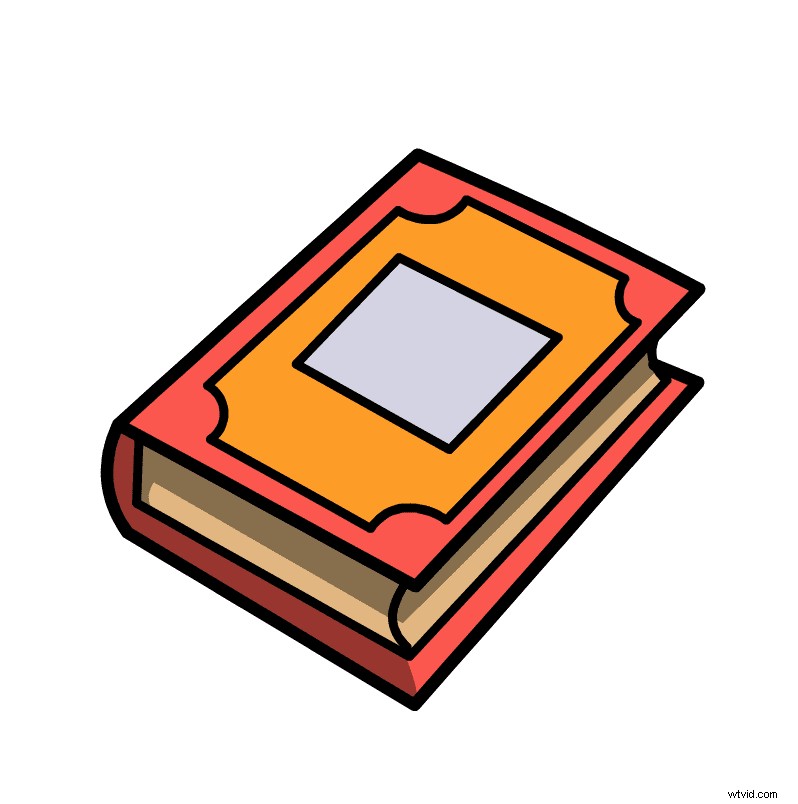Quindi, vuoi scrivere una sceneggiatura che non solo attiri il tuo pubblico, ma lasci loro il desiderio di saperne di più. Dobbiamo avvertirti, non è sempre facile. Ma le cose migliori non lo sono mai!
Scrivere una sceneggiatura avvincente per un irresistibile video esplicativo richiede tempo e pratica. Ma fortunatamente per te, ne abbiamo scritti molti prima, quindi siamo qui per aiutarti ad accelerare il processo condividendo i nostri suggerimenti e trucchi provati e testati per scrivere script che vengano notati.
Ora, prima di entrare nei passaggi per scrivere la tua sceneggiatura, facciamo un rapido passo indietro per capire esattamente cosa intendiamo per video esplicativo e perché scrivere la tua sceneggiatura è una parte così importante per crearne una. Se vuoi saltare avanti, usa i nostri link qui sotto 👇
1. Cos'è un video esplicativo?2. Perché il tuo video esplicativo è così importante?
3. Il nostro processo collaudato per la scrittura di script video esplicativi
- Definisci il tuo PERCHÉ con un brief creativo
- Identifica la tua storia
- Scrivi i tuoi "must have"
- Crea il tuo gancio per attirare l'attenzione fin dall'inizio
- Empatia:dimostra di comprendere il problema del tuo cliente
- Presenta la soluzione:il tuo prodotto, servizio o idea
- Dipingi un'immagine di come sarà il futuro con te dentro
- Rafforza il tuo messaggio con prove sociali
- Dì al tuo spettatore cosa fare dopo
- Modifica, regola e controlla
Cos'è un video esplicativo?
Un video esplicativo è un breve video che racconta la storia della tua attività, prodotti e servizi o un'idea in modo coinvolgente e conciso.
Sebbene siano spesso utilizzati dalle aziende per supportare le vendite e il marketing, possono essere utilizzati anche da educatori e professionisti per trasmettere nuove idee e aumentare la comprensione di nuovi argomenti.
I video finiti possono essere condivisi praticamente ovunque:da siti Web e blog a e-mail, social media e presentazioni. La bellezza di un video esplicativo è che è super flessibile e può essere adattato per adattarsi a quasi tutti gli argomenti! Ecco un esempio 👇
Perché il tuo video esplicativo è così importante
I video esplicativi sono così efficaci perché fanno appello a più sensi. Con elementi visivi sotto forma di animazione o grafica e audio da una voce fuori campo e/o musica di sottofondo che lavorano insieme, possiamo elaborare le informazioni molto più velocemente e più facilmente.
Inoltre, i video esplicativi possono suscitare una risposta emotiva attingendo alle nostre più grandi paure, problemi o speranze e rendendo così i video super memorabili.
Ma per ottenere questo effetto, devi creare un inizio con basi solide. Ciò significa prendersi il tempo per stabilire a chi è destinato il video, cosa vuoi che provino, cosa vuoi ottenere e cosa vuoi che facciano in seguito. Queste informazioni informano quindi il tuo script che funge da spina dorsale del tuo video. Quindi, in poche parole, se risolvi il copione, è probabile che il resto del tuo video abbia successo!

Il nostro collaudato processo per la scrittura di script video esplicativi
E ora le buone notizie. Come puoi scrivere un video esplicativo di successo seguendo il nostro semplice processo in 10 passaggi. Cominciamo...
1. Definisci il tuo PERCHÉ con un brief creativo
Ok, quindi sai che vuoi creare un video esplicativo, ma hai davvero delineato il motivo? Potrebbe sembrare una domanda ovvia, ma vuoi andare oltre risposte vaghe come "aumentare la consapevolezza". Più dettagliato e mirato è il tuo obiettivo, più efficace sarà il tuo video.
Ecco un esempio:
"Il nostro nuovo prodotto supera tutti i nostri concorrenti con la sua tecnologia pionieristica. Ma ho bisogno di un video esplicativo per aiutare i nostri clienti a capire come è diverso e perché è così vantaggioso per loro, quindi aggiorneranno il loro account con noi".
Ti consigliamo di rispondere a queste domande per iniziare a creare il tuo brief:
- Perché vuoi creare un video esplicativo? Probabilmente non stai creando questo video solo per divertimento, quindi essere sicuro del tuo obiettivo finale può aiutarti a rimanere in pista e scrivere una sceneggiatura efficace.
- Quale messaggio vuoi trasmettere? È facile lasciarsi distrarre e condividere informazioni che ti interessano e che potrebbero non essere sempre rilevanti per il tuo pubblico. Quindi concentrati davvero su uno o due messaggi chiave che il tuo pubblico HA BISOGNO di conoscere.
- Perché alla gente interessa? Ancora una volta, quando la tua attività, idea o argomento ti è così vicino, a volte è difficile vederla da una prospettiva esterna. Se il tuo pubblico non sa già di aver bisogno del tuo prodotto o servizio, pensa a come renderlo rilevante per loro. La tecnica delle domande "5 perché" (modello GRATUITO qui) può aiutarti a identificare i principali punti dolenti o desideri del tuo pubblico. Dai un'occhiata 👇
- Che valore avranno queste informazioni? Affinché un video esplicativo abbia successo, deve attingere a ciò che interessa al tuo pubblico. Quindi consideralo dal loro punto di vista, in che modo trarranno vantaggio dalla visione del tuo video?
- Quale cosa voglio che il mio spettatore riceva? Sebbene ricordiamo molte più informazioni dal video rispetto a quelle del solo testo o audio, non puoi comunque aspettarti che il tuo pubblico ricordi ogni elemento del tuo video esplicativo. Quindi, se potessero ricordare solo una cosa, cosa vorresti che fosse? Sapere questo ti aiuterà davvero a concentrarti sul tuo messaggio principale.
2. Identifica la tua storia
Ora sai cosa vuoi ottenere e il messaggio che devi trasmettere puoi intrecciarlo in una storia avvincente. Questo potrebbe sembrare complicato ma non deve esserlo. La maggior parte dei video esplicativi segue una delle due strutture della storia molto efficaci. Questi sono...
Problema nella struttura della soluzione
Questa è la struttura classica per molti esplicatori di attività, prodotti, servizi o idee. Al centro di tutto, sei l'eroe che semplifica la vita dei tuoi spettatori con i tuoi clienti impostati come personaggi del racconto. La storia inizia rendendo il problema chiaro e comprensibile, quindi si trasforma in una transizione naturale verso la soluzione.
Lungo il percorso puoi aggiungere ulteriori tocchi memorabili creando più voci per rappresentare personaggi diversi o aggiungere ulteriori colpi di scena per mantenere le cose interessanti. Questa è la struttura su cui ci concentreremo per questo blog.

Struttura panoramica del processo
In alternativa, se stai spiegando un servizio o un prodotto how-to, potresti scoprire che la struttura panoramica funziona meglio. A differenza del "Problema alla soluzione", si concentra principalmente su un viaggio lineare che un personaggio (molto probabilmente il tuo cliente o utente) intraprende per completare l'attività. Se scegli questa struttura, puoi saltare i dettagli sul problema del tuo cliente e passare direttamente alle cose succose:la soluzione!

3. Annota i tuoi "must-have"
A questo punto, è il momento di iniziare a scrivere. Ma sedersi per scrivere una sceneggiatura perfetta in una volta sola accade molto raramente e può essere seriamente intimidatorio. Quindi ti consigliamo di ottenere alcuni punti grezzi con cui iniziare a lavorare.
Potrebbe trattarsi di 5-10 punti elenco di informazioni che devi assolutamente includere nel tuo video come parte della tua storia. Usa il lavoro che hai svolto nei due passaggi precedenti per aiutarti a identificare questi messaggi concentrandoti su ciò che il tuo pubblico ha bisogno di sapere, perché dovrebbe interessarsene e cosa vuoi che se ne vada.
In 10-15 minuti avrai una bozza dei tuoi punti essenziali e dove si inseriscono nella struttura della tua storia. Da qui è molto più facile riempire gli spazi vuoti senza la preoccupazione di perdere informazioni chiave.

4. Crea il tuo gancio per attirare l'attenzione fin dall'inizio
Dal tuo contorno approssimativo, ora puoi iniziare a smussare i bordi, aggiungere personalità e portare il pizazz! A partire dalla tua introduzione:come sappiamo, se non riesci ad attirare l'attenzione nei primi secondi del tuo video, il tuo pubblico si spegnerà prima di sentire il resto. Quindi inchiodare l'inizio della tua sceneggiatura è piuttosto importante... nessuna pressione!
Ma ci sono molti modi per farlo. Dai un'occhiata alle 6 opzioni che amiamo 👇
La tecnica di amplificazione 
Questa è una delle tecniche più popolari e, per una buona ragione, è molto efficace. Si tratta di prendere qualcosa che sembra minore e dimostrare che in realtà è un problema serio. O viceversa:prendere un problema che sembra spaventoso o complicato e renderlo semplice. Questo fattore sorpresa farà pendere le persone da ogni tua parola.
Esempio:sappiamo che la malaria uccide mezzo milione di persone ogni anno e abbiamo una cura per essa dal 1600. Aspetta cosa? Ora hai tutta la nostra attenzione.
La tecnica sensoriale
Un altro modo per coinvolgere il tuo pubblico è quello di stimolare la loro immaginazione ambientando una scena con dettagli vividi o chiedendo loro di ricordare un particolare ricordo. Attingi alle immagini, ai suoni, alle sensazioni e agli odori che potrebbero provare per immergerli nella tua storia. Ancora una volta, poiché questo ci fa pensare a livello multisensoriale, ricordiamo più informazioni, quindi è vantaggioso per tutti.
Esempio:adoriamo questo discorso TED di Amy Cuddy che dà il via alle cose chiedendo al suo pubblico di fare un audit dei loro corpi. Ha chiesto loro 'quanti di voi si stanno rimpicciolendo? Forse sei curvo, accavalli le gambe o ti avvolgi le caviglie?'. Questo cattura immediatamente l'attenzione e attiva la consapevolezza sensoriale del pubblico.
La tecnica del puzzle

Few of us can resist a challenge so grab attention with a puzzle the piques curiosity. From problems and riddles to math problems and tongue twisters, there are lots of different ways you could use this and tie it back to your message.
You could leave the puzzle open-ended as something to ponder, direct your audience to somewhere they can find the answer, or even promise to tell them the answer at the end to hold attention for longer!
Example:Dan Pink's opener "If someone gave you a candle, some thumbtacks and some matches, could you attach the candle to the wall so the wax doesn't drip onto the table?" 👀
The question or rhetorical question

Whether you expect an answer or not, asking a question is a great way to start your explainer video. It gets your audience thinking about everything from their personal experiences, memories, identity or general knowledge - whatever works for your subject. You can also use questions to gently nudge your audience towards your desired conclusion or help them recognize problems that you can solve.
Example:from where you're sat watching this, nod your head if you've experienced stress in the last year... in the last month... in the last week... in the last 24 hours.... This would start to show just how much stress could be impacting their life.
Humor
Now this one can be super tricky but when done right, it's the ultimate crowd pleaser. Humor makes your audience feel at ease, more receptive to your idea and warmer towards you. The best (and safest) jokes use self-deprecating humor to make light of yourself or a situation you've been in. This opener works really well as a story and so links to our next option.
Example: Shawn Anchor's perfect comic timing makes this opening story super funny. We can't resist liking him and being drawn in as the tale unfolds.
Once upon a time 
Last but by no means least, you could start your explainer video and grab attention with a story. Similarly to Shawn's example above you can combine a story with any of these previous techniques.
Stories are one of the most effective tools to inspire empathy and understanding in your audience. They give us something to relate to and we can imagine ourselves in the situation. Storytelling also builds more personal connections faster as you have to show your vulnerability to tell them.
Example: "I'll never forget that day back in the spring of 2006..." Even a simple opener like this intrigues us and gets us wondering what could be so bad, good or incredible that would stay with you for so long.
5. Empathize - show you understand your customer's problem
Once you've got all eyes on your video, it's time to build more emotional connections as we know this is the best way to ensure your video gets remembered. One way to do this is by showing empathy. By this we mean really showing you understand your audience and the pain points or problems they're experiencing.
That could mean you reference thoughts and feelings they might have had or go into extra detail about the impact the problem has on other areas of their life. Not only will this make them feel heard and seen but it's a great way to position yourself as a trusted partner, not just a faceless business or salesperson.
6. Introduce the solution - your product or service
Once your audience can see themselves in your video the story flips. Now's the time to show your audience how you can make those problems go away or help them achieve their much longed for ambitions.
Just be sure to keep this section short and succinct, focusing only on those key bits of information your audience absolutely needs to know about your product, service or idea. You can refer back to your 'must-haves' list to help with this.
If in doubt - just think would a child understand this? It's always a good test to help eliminate jargon and really distill your message down into its simplest form.

7. Paint a picture of what the future looks like with you in it
However, it's not enough to just explain how you can help, it's key to complete the story by giving your audience a glimpse at what life with you could be like.
It could be that you help them do something boring faster so they can spend more time with their children. Or you remove a blocker to help sales people sell more and reach their bonuses - hello extra vacation!
Painting a vivid picture of this vision can not only help it seem more attainable but also make your audience want it more. After all, who doesn't want to imagine themselves on a tropical vacation (especially now 😍) or with more spare time on their hands!?
8. Reinforce your message with social proof
Now we're nearly ready to wrap up the video. But before you do, a sprinkling of social proof can ease any final concerns your audience might have.
Social proof includes content like positive reviews, customer quotes or information about your existing customer base. It's what we all look for when booking a hotel or buying something online - that validation that the company is going to do what they say they will.
With that in mind, it's a great addition to the end of your explainer video. Simply include a quote or customer star rating to reinforce your message.
9. Tell your viewer what to do next
Hooray - we're onto the final step in writing your script! All that's left to do is end strong by telling your audience what to do next.
If your goal was to encourage prospective customers to buy your product or service then tell them how they can do so. If you wanted to pique you audience's interest in your topic then tell them where they can find out more.
Don't leave it up to chance that your viewers will know where to turn next! Be sure by ending your video with clear and direct instructions on what to do next if they liked what they saw/heard.

10. Edit, adjust and check
With that you just finished the first draft of your script - congratulations! Take a moment to feel that accomplishment before we get into editing mode.
This is where your draft script turns into polished perfection ready for your voice-over to be recorded. There are a few things to look out for and check as you reread your script. But before we do we recommend you take at least 10 minutes away from it (ideally 24 hours) to help you see the script with fresh eyes. We also know how hard editing is when you love the say a certain sentence or phrase sounds, or perhaps you really want to include extra information that there isn't space for. This is the time to take a step back and detach yourself from the writing - this is the time to be objective.
So, here we go - these are the final elements we check before signing off on a script:
- Does it pass the first grader test? As we mentioned earlier on in this guide, the best explainer videos are super simple and easy to understand, even by a child. So review your content and check it for any technical jargon, complex sentences and detail that's just not needed.
- Length - is it too long, too short or just right? Most explainer videos range from 1 - 3 minutes in length depending on the topic and content. We wouldn't recommend explainer videos of more than 3 minutes for marketing and sales purposes specifically as your audience is likely to tune out. You can use free tools to help you determine the current length of your script and make adjustments as needed.
- Tone of voice - whether you're speaking as your brand, an individual or a narrator, the tone of your writing not only has to be consistent but make sense for the video. Also bear in mind that as your script will be spoken and not read, it should sound a little less formal and more like you're talking to a friend.
- Read it aloud - as we mention in the point above, your script should sound natural when spoken, not like you're reading from the dictionary. So practice reading it yourself and check for any sentences that are too long, stuffy or complex.
Once your script passes these final tests it's ready to share with the world! Get your voice warmed up and ready to record your stand-out voice-over. Happy recording!
With that, you're ready to animate! Put your knowledge into practice by creating your own animated video. Start a free 7-day trial (no credit card needed) or join our creative community by becoming a VideoScribe subscriber! 👇

